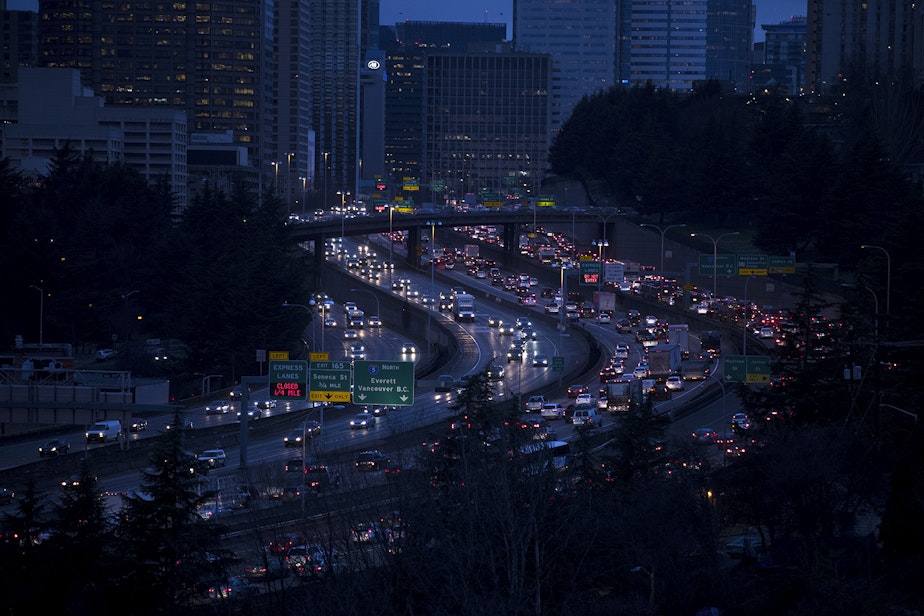Traffic fatalities spike in Washington state

While other developed countries have made their roads safer, the United States is seeing a rising death toll on our streets. The issue is especially urgent in our own backyard.
According to the state's Traffic Safety Commission, last year Washington had one of the worst surges of traffic deaths of any state in the country.
Soundside is joined by senior editor of The Urbanist, Ryan Packer, along with Yonah Freemark, a researcher at the Urban Institute in Washington, D.C., to discuss this sharp rise in traffic deaths.
"We're continuing to see a big increase in the number of fatal and serious crashes on the roads in Washington," Packer explained. "In recent years, 86% of people walking and biking who've been killed in Washington, have been killed on streets with a 30 mile per hour posted speed or higher."
These high speed arterial roads with multiple lanes are often harder to cross, with greater distances between crosswalks.
"When you look at countries in Europe and Asia, what you find is that there's been a tremendous effort to reduce the scale of their arterial roads to increase improvements for pedestrians, such as improved sidewalks and crosswalks," Freemark explained.
Sponsored
Another contributing factor in traffic fatalities is vehicle size. There has been an increase of strikes to the head, neck, and chest, due to the increased height of many of the trucks and SUVs that are on the roads today. Freemark says that problem is uniquely American.
"We have made absolutely no effort to restrict the size of the increasingly giant vehicles that we see on the streets throughout our communities," he explained. "In other countries, there's been more of an effort to essentially encourage people to drive smaller vehicles by creating weight taxes on vehicles, and by requiring different hood designs on these large SUVs and trucks."
Seattle Department of Transportation's new director, Greg Spotts, is in the process of reviewing the city's Vision Zero program that has set a goal of eliminating traffic deaths in the city. But transportation advocates are hoping for more.
Packer says that often, the decision on where to invest money comes down to politics.
"I think our leaders are taking it seriously," Packer said. "Obviously, the ones who represent areas that are most impacted by traffic violence are the ones taking it the most seriously."
Sponsored
Packer thinks the conversation should be about what our investments are doing and what our money is actually funding.
"In part, that's what the SDOT director's 90-day Vision Zero review is intended to do," he explained. "Look at where investments are going, what is actually working, what is actually not. But at the end of the day, the decision for where to invest is a political one, and not one made at SDOT, so that's where the buck will stop."
You can listen to the entire conversation by clicking the link above.






